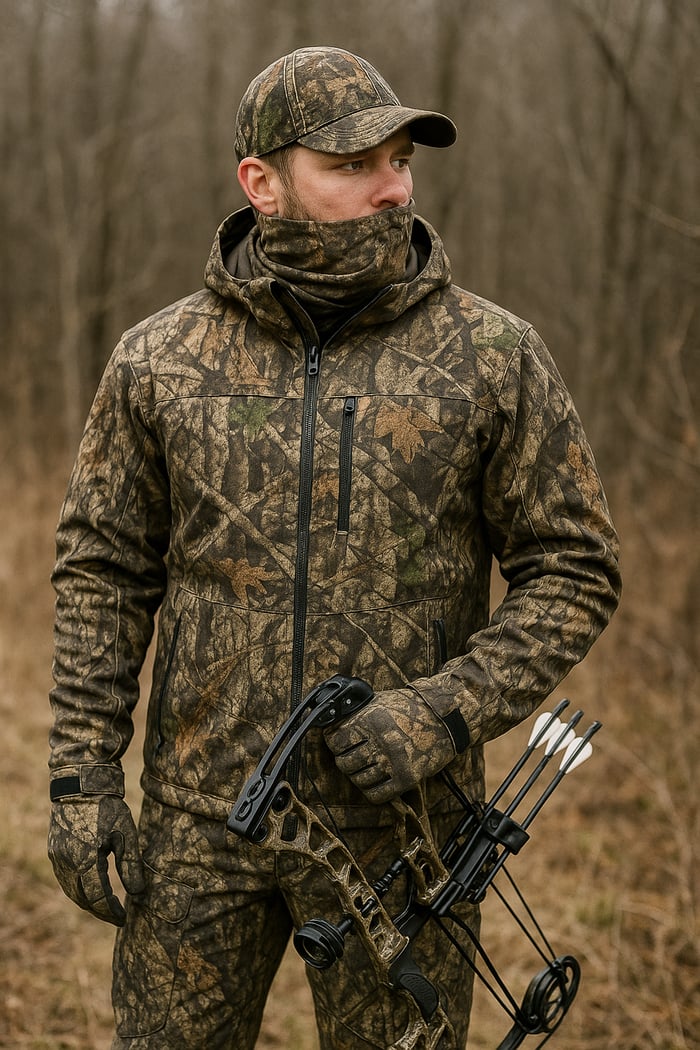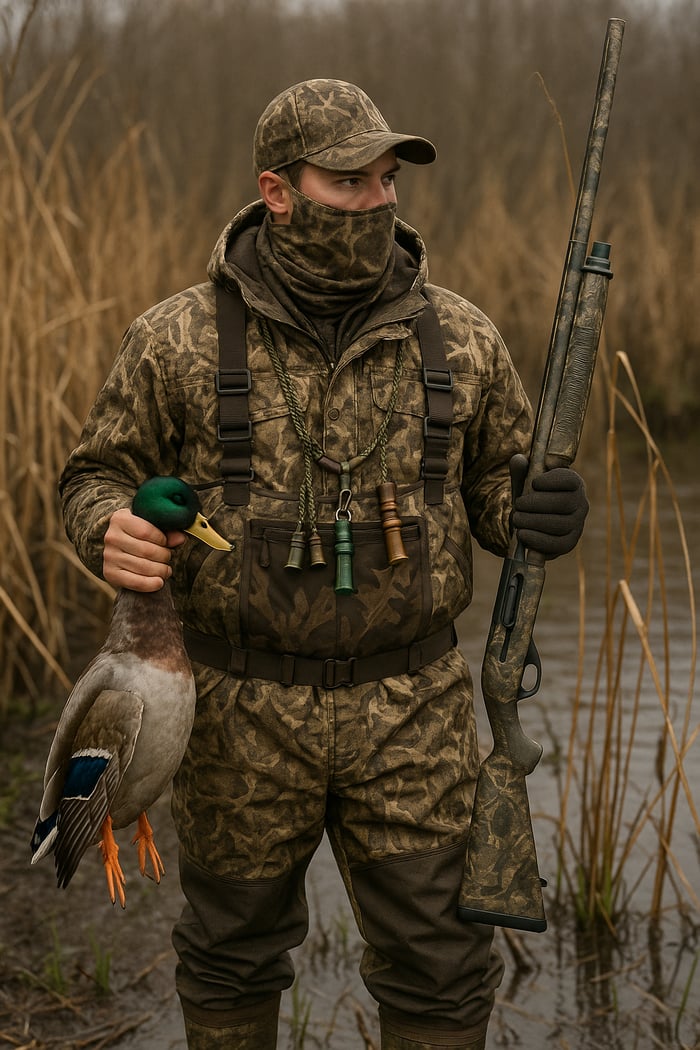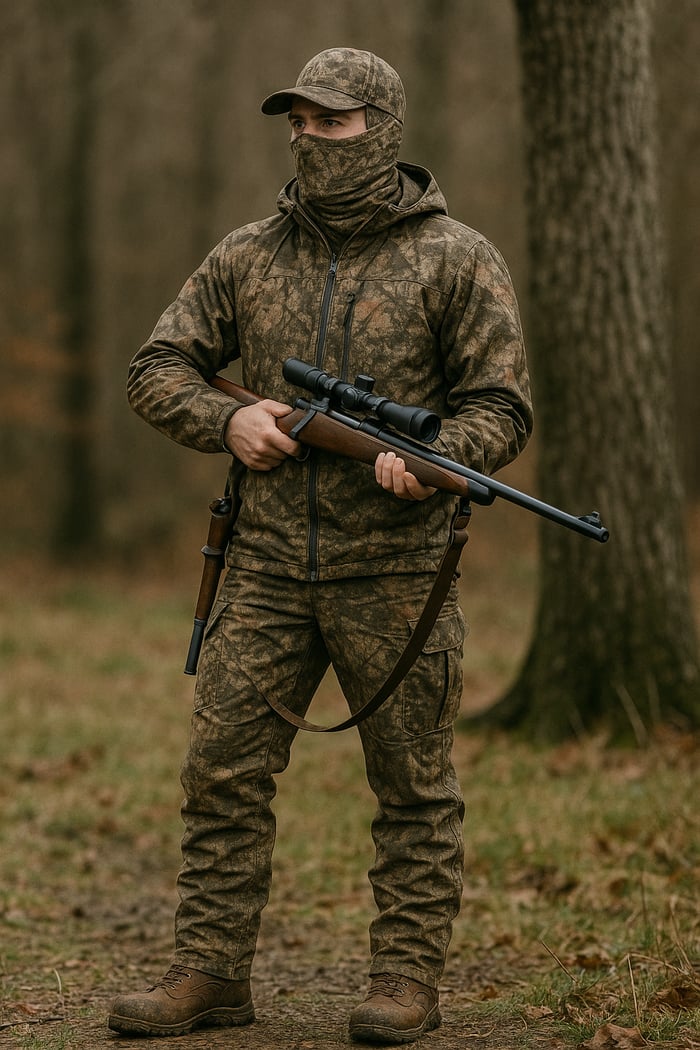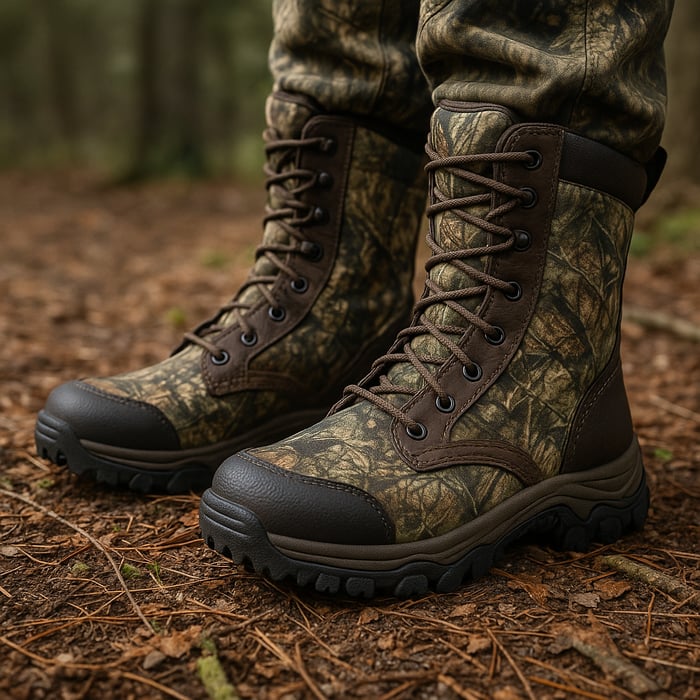Deer hunting is not just a sport—it's a way of life, a challenge of skill, and an opportunity to connect with nature. But to ensure that you get the most out of your hunting experience, you must be ready, and that begins with selecting the best deer hunting attire. The attire you choose can affect your comfort, stealth, and deer hunting clothes success on the field. Beginner or experienced hunter, this all-inclusive guide will take you through all you should learn on how to choose the best deer hunting attire for any scenario. From camouflage designs to layering designs, fabrics, and season, we will discuss it all in depth to help you prepare for your next hunt.
Why Deer Hunting Clothes Are a Game-Changer
When you're out in the woods stalking deer, your clothing is your initial line of defense against the elements and your key to staying undetected. Deer hunting clothes aren't just a matter of dressing like a deer hunter—they're all about function. They keep you protected from inclement weather, allow you to camouflage into your environment, and keep you safe. Deer possess highly sensitive senses, especially sight and smell, so your deer hunting attire has to be constructed so that you remain concealed while having freedom of movement.
The proper deer hunting attire will also increase your confidence in the field. When you are warm, dry, and camouflaged, you can concentrate on tracking your game and delivering the perfect shot rather than fretting about being miserable or visible. In this guide, we will discuss the essential components of deer hunting attire and how to select the perfect pieces to meet your requirements so that you can be ready for any hunting environment.
The Camouflage Role in Deer Hunting Outfits
One of the most vital elements of deer hunting attire is camouflage. Deer are extremely alert, with exceptional eyesight acutely sensitive to movement, outline, and any object that looks unnatural in its surroundings. Appropriate camouflage patterning on your deer hunting garment allows you to merge completely with your environment regardless of whether it's a jungle, a vast open space, or a cold winter landscape.
There are many camouflage patterns to choose from, each suited for particular environments. Some of the most popular ones include Realtree Edge, Mossy Oak Break-Up Country, and Kryptek Highlander. For instance, Realtree Edge is great for mixed forests with plenty of green and brown, whereas Mossy Oak Break-Up Country is best suited for rocky, rough terrains. When choosing deer hunting attire, select a pattern that suits the terrain and season of your hunting ground to achieve maximum stealth.
The fit of your deer hunting clothes is just as important as the pattern. Baggy clothing can rustle against branches or get caught, alerting deer to your presence. On the other hand, overly tight clothing can restrict your movement, making it harder to draw a bow or aim a rifle. Look for deer hunting clothes that are snug but allow for a full range of motion. Numerous brands incorporate flexible features such as drawstrings, elastic cuffs, or articulation knees to provide a comfortable and functional fit.
Selecting the Correct Material for Deer Hunting Apparel
The clothing material used in deer hunting apparel has a huge influence on how well they perform. You require fabrics that are resistant, silent, and compatible with the weather condition you'll be exposed to. The following is a summary of the most popular materials used in deer hunting apparel and what makes them work:
Polyester: Quick-drying, moisture-wicking, and lightweight, polyester is a popular choice for base layers and outerwear. Polyester keeps you dry by drawing sweat away from your skin, essential during long hunts or in hot weather.
Merino Wool: A natural fiber that provides excellent insulation and odor control. Merino wool will keep you warm even in wet conditions, and it resists odors naturally, which is important as deer can catch a whiff of humans over long distances.
Fleece: Quiet, warm, and soft, fleece is perfect as a mid-layer for cold conditions. It's light and ventilated, meaning it won't weigh you down or cause overheating.
Gore-Tex: Waterproof and breathable membrane found in jackets and pants. Gore-Tex deer hunting apparel is ideal for rainy, snowy, or windy weather, keeping you dry without compromising breathability.
Softshell Fabrics: They offer wind resistance, water resistance, and stretch for mobility. Softshell deer hunting apparel is ideal for active hunts where mobility is essential.
Cotton: Though comfortable to wear around, cotton is a bad idea for deer hunting attire. It wicks moisture and traps it next to your body, leaving you cold and damp.
When purchasing clothes for deer hunting, consider combinations of these fabrics to achieve the optimum performance. A jacket with a Gore-Tex face fabric and a fleece lining, for instance, provides protection against the weather and warmth, and it is thus a great all-around piece for different situations.
Mastering Layering with Deer Hunting Clothes
Layering is the key to remaining warm while deer hunting, particularly when weather conditions are uncertain. By dressing in multiple layers of deer hunting apparel, you are able to adjust to varying temperatures and remain warm from sunrise to sunset. Here's a guide on creating an effective layering system:
Base Layer: The Building Block of Deer Hunting Attire
Your base layer is the first garment you wear, and it's responsible for handling moisture. A good base layer will keep you dry by moving sweat away from your body, keeping you warm and avoiding the chill. Use deer hunting attire made from synthetic materials such as polyester or natural materials such as merino wool. Do not wear cotton, as it retains moisture and makes you feel cold.
During warm weather, a light base layer will do. In colder weather, select a heavier base layer for extra insulation. Long-sleeve shirts and pants are good options for base deer hunting attire, as they keep your skin safe from scratches, insects, and sunburn.
Mid-Layer: Insulation for Deer Hunting Clothes
The mid-layer is where you introduce heat. This layer insulates heat to keep you warm without having you overheat. Fleece jackets, wool sweaters, and insulated vests are good mid-layer deer hunting attire. The trick is to select material that is breathable and easy to remove if it gets too hot.
In light weather, you may get by with one fleece jacket or vest. On chillier hunts, you can wear a wool sweater under a puffy vest for added insulation. The flexibility of mid-layers is a big part of their appeal—you can take them off or add them on as the situation dictates, so bring deer hunting attire that's lightweight and easy to remove.
Outer Layer: Weather Protection in Deer Hunting Clothes
Your outer layer is your protection from the elements—wind, rain, snow, and thorns. Waterproof and windproof jackets and pants constructed from materials such as Gore-Tex or analogous materials are best for this layer. Your outer deer hunting attire should also be quiet so as not to surprise deer when walking.
Search for outer layers that have functional aspects such as multiple pockets for accessories, adjustable hoods, and reinforced sections for durability. Certain deer hunting attire includes in-built harness slots for tree stand protection or scent-control technology to minimize your scent. Ensure your outer layer is similar to your camouflage pattern for stealth purposes.
Seasonal Strategies for Deer Hunting Clothes
Deer hunting occurs all year round in certain areas, and every season requires a new strategy for deer hunting attire. Here's the key to dressing for success each season:
Spring and Summer Deer Hunting Attire
During spring and summer, light deer hunting attire is necessary to remain cool and comfortable. Wear lightweight base layers that breathe and outer layers of thin, moisture-wicking polyester. Camouflage tops and pants with ventilation elements, such as mesh panels, work well for warm weather hunts.
Insects such as mosquitoes and ticks are a problem during warmer months, so seek out deer hunting apparel treated with insect-repellent technology. Long pants and long sleeves offer added protection, even during hot weather. Opt for camouflage patterns that resemble green leaves or grassy fields to blend into spring and summer environments.
Fall Deer Hunting Clothes
Fall is the favorite season for deer hunting, and the weather varies from cool mornings to hot afternoons. Layering becomes imperative here. Begin with a moisture-wicking base layer, then include a fleece or wool mid-layer, and finish off with a waterproof outer layer. Your deer hunting attire must be flexible enough to withstand temperature fluctuations.
Camouflage colors that resemble fall leaves—browns, oranges, and yellows—are best for camouflage. Blaze orange is necessary in many states for safety during fall hunting, so consider deer hunting attire with blaze orange panels that can be zipped up when not in use. A light backpack can be used to carry additional layers for changing weather.
Winter Deer Hunting Attire
Winter deer hunting requires heavy-duty deer hunting attire to fight off cold temperatures, snow, and wind. Insulated jackets, bibs, and boots with heavy insulation such as Thinsulate are a must. Your outerwear should be waterproof and windproof to stay dry and warm.
Accessories such as hand warmers, heated vests, and thermal socks can be a game-changer in extreme cold. Your deer hunting attire should still provide mobility, so avoid too bulky items that limit your movement. White-based camouflage designs, such as Realtree Snow, are ideal for snowy conditions.
Essential Accessories for Deer Hunting Clothes
Your deer hunting apparel is not complete without accessories. These add-ons make you more comfortable, sneaky, and safe in the field. The following are some essentials to include:
Hats and Face Masks: A camo hat or face mask hides your head and face while covering you from sun or cold. Breathable models are best used in warm weather, while insulated ones are perfect for winter.
Gloves: Light gloves shield your hands from bugs and scratches during summer, and insulated gloves keep them warm during winter. Select gloves that provide dexterity for weapon or gear handling.
Boots: Waterproof, insulated boots with a good grip are a foundation of deer hunting attire. Select boots that are comfortable for long walks and quiet on different surfaces, such as leaves or snow.
Socks: Synthetic or wool socks warm and dry your feet. During winter, wear thin socks layered under thicker ones for added warmth without sacrificing fit.
Belts and Suspenders: A good belt or suspenders hold your deer hunting attire in place, particularly when carrying heavy equipment or climbing into a tree stand.
Safety Features to Look for in Deer Hunting Clothes
Safety is of utmost concern when deer hunting, and your deer hunting attire can assist in keeping you safe. Blaze orange clothing is mandated by many states for hunters to remain visible to other hunters. Some deer hunting attire features blaze orange panels or vests that may be concealed when not necessary, providing versatility.
Scent-control technology is also a key feature. Deer possess a remarkable sense of smell, so deer hunting clothing with carbon or antimicrobial treatment can be used to cover up your scent. To keep scent control, wash your deer hunting clothing with scent-free detergent and keep them in airtight containers or bags.
Reflective patches or strips on deer hunting apparel will also enhance low-light visibility, particularly if you hunt during early morning or late evening. There are jackets and pants that feature harness pass-throughs for safety in tree stands, so you can remain safe without sacrificing your apparel's utility.
Top Brands for High-Quality Deer Hunting Clothes
With so many brands out there making deer hunting clothes, it can be a challenge to know where to begin. Here are some great brands with great quality and performance:
Sitka Gear: A high-end brand with high-performance deer hunting apparel made with cutting-edge materials, innovative technology, and world-class camouflage patterns. Ideal for professional hunters.
Under Armour: Great for offering cheap deer hunting apparel with scent-control and long-lasting, moisture-wicking materials.
Cabela's: Affordable option with extensive selection of deer hunting attire that finds the right balance of quality and price.
First Lite: Merino wool deer hunting apparel that provides lightweight warmth and natural odor control.
Kuiu: Light, rugged deer hunting attire made for backcountry hunters who require mobility and protection from the weather.
When choosing a brand, consider your budget, hunting style, and the conditions you’ll face. Try on deer hunting clothes whenever possible to ensure a good fit and comfort, as sizing can vary between brands.
How to Care for Your Deer Hunting Clothes
Proper care extends the life of your deer hunting clothes and keeps them performing at their best. Always wash your deer hunting clothes with scent-free detergent to avoid leaving human odors that deer can detect. Avoid fabric softeners, as they can leave a scent and reduce the effectiveness of waterproof coatings.
Pack your deer hunting apparel in airtight bags or containers to prevent them from getting dirty and smelly between deer hunts. Inspect your deer hunting apparel prior to each trip for tears, worn areas, or broken zippers, and fix them early to prevent any problems in the field. Take care of the waterproofing, insulation, and camouflage of your deer hunting apparel according to the manufacturer's guidelines.
Budgeting for Deer Hunting Apparel
Good deer hunting apparel is an investment, but it's one that's well worth it for the comfort, durability, and performance you get. If you're strapped for cash, begin with the staples: a moisture-wicking base layer, a fleece mid-layer, and a waterproof top. These basics can be utilized across several seasons, offering you maximum bang for your buck.
Search for sales, clearance prices, or outlet stores from good brands to purchase high-quality deer hunting attire at a reduced price. Second-hand shops, online stores, or hunting forums are also good sources to look for gently used deer hunting attire in good condition. Gradually, you can include specialized gear such as insulated bibs, scent-control jackets, or high-quality boots as your budget permits.
Tips for Testing Deer Hunting Clothes Before Your Trip
Test your deer hunting apparel prior to venturing into the field to ensure that they can withstand the rigors. Dress in your entire ensemble—base layer, mid-layer, outer layer, and accessories—on a practice hike or scouting expedition. This allows you to evaluate for comfort, fit, and quietness. Take note of how your deer hunting apparel handles as you walk, sit, or climb since these actions are reflective of what you will be doing on a hunt.
Practice in the same conditions you will encounter. If you are hunting in rainy weather, for instance, ensure your jacket and pants are actually waterproof. If you are hunting in cold weather, ensure your layers warm you without making you hot during activity. Tweak your configuration as necessary to prepare you for the actual thing.
Common Mistakes to Avoid with Deer Hunting Clothes
Even professional hunters can be wrong when they select deer hunting attire. Be aware of these traps to watch out for:
Not paying attention to Scent Control: Washing or storing your deer hunting gear improperly can contaminate human scents which repel deer. Always handle scent-free merchandise and store using airtight containers.
Wearing the Wrong Camouflage: A non-regular pattern can make you more noticeable. Research your territory and choose deer hunting attire with the correct camouflage.
Not Missing Safety Features: Forgetting blaze orange or reflective features can endanger you. Ensure that your deer hunting attire complies with local safety standards.
Purchasing Ill-Fitting Clothing: Overly tight or loose clothing may impede movement or cause clashing. Be sure to test deer hunting attire for proper fit.
Spelling Out Money on Quality: Budget deer hunting gear can cost little initially but then break easily in harsh environments. Spend money on quality, rugged equipment.
The Future of Deer Hunting Clothing
The deer hunting clothing world is changing all the time, with new innovations and technologies emerging on the market. Some companies are testing out advanced scent-control systems, such as ozone-based fabrics, to eliminate odors more efficiently. Others are creating deer hunting clothing with integrated heating for extreme cold or light cooling fabrics for warm environments.
Sustainability is also becoming important, with some businesses manufacturing deer hunting clothes from recycled fabrics or green dyes. With the advancing technology, deer hunting clothes are expected to be even more tailored to suit hunters' needs, providing them with better performance and comfort on the ground.
Conclusion: Gear Up with the Best Deer Hunting Clothes
Selecting the proper deer hunting attire is more than just dressing the part—it's about remaining comfortable, concealed, and protected while doing what you love. By prioritizing camouflage, fabrics, layering, and seasonal requirements, you can create a wardrobe of deer hunting attire that equips you for whatever comes your way. Whether you're tracking deer during a summer heat wave or fighting a winter snowstorm, the proper deer hunting attire will keep you in the hunt.
Before your next deer hunt, take a good look at your deer hunting attire. Do you have the proper layers, camouflage, and accessories for the terrain and weather conditions? Are your clothes in good shape and stored properly? By investing in quality deer hunting attire and maintaining them, you'll be preparing yourself for a successful and enjoyable deer hunt. So suit up, get out there, and make your next deer hunt one to remember.





